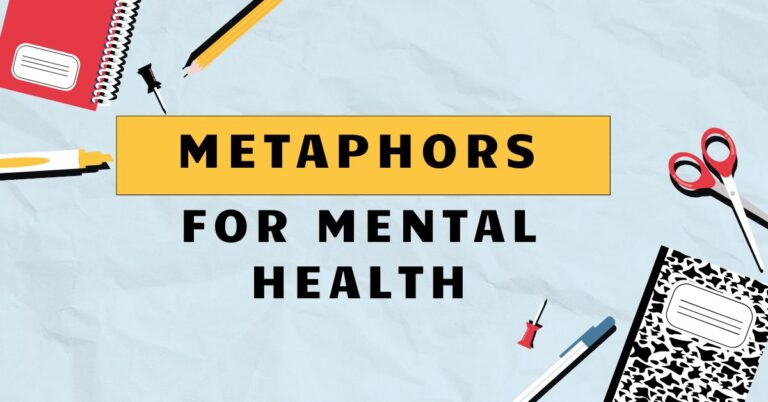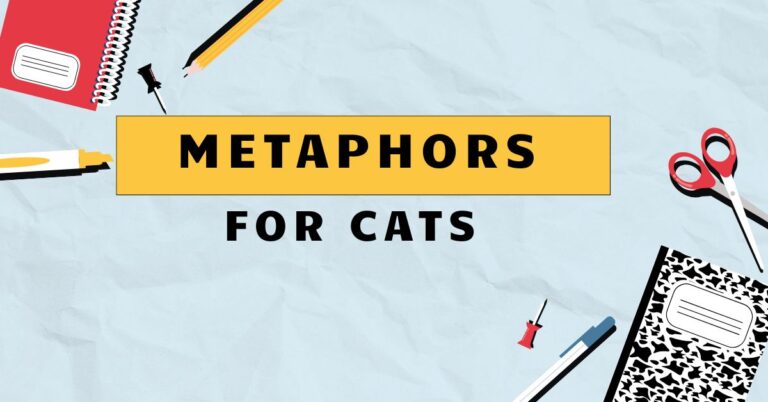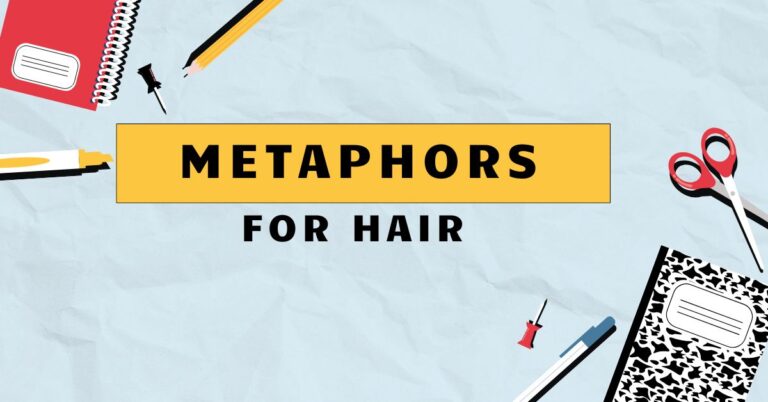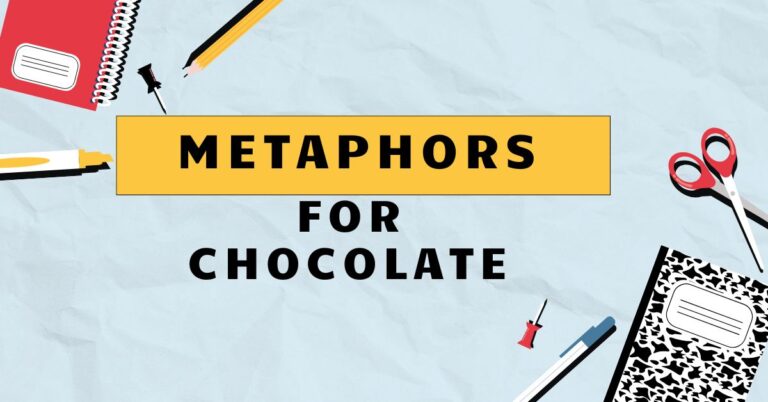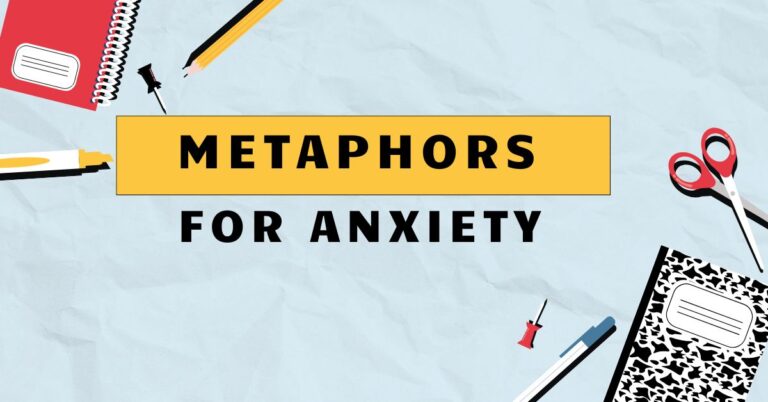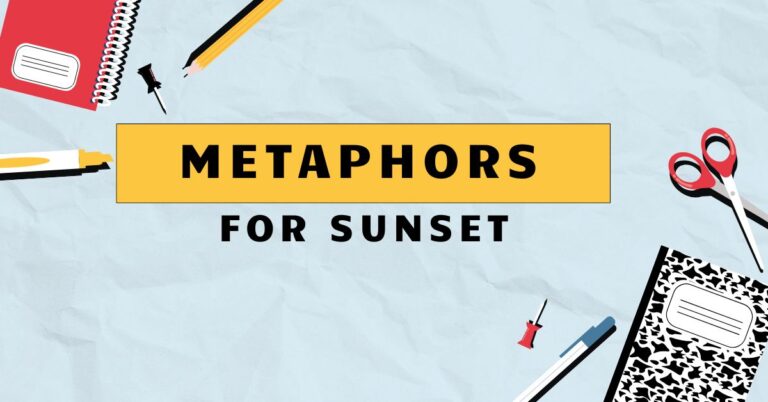31 Metaphors for Hunger: Understanding Figurative Language
Understanding metaphors for hunger enhances our grasp of figurative language, allowing for more vivid and impactful communication. This exploration is crucial for anyone looking to improve their writing, reading comprehension, or overall language skills.
By examining the diverse ways hunger can be expressed metaphorically, we gain insight into the power of language to evoke emotions and create imagery. This article is perfect for students, writers, and English language learners of all levels.
Table of Contents
- Introduction
- Definition of Metaphor and Hunger
- Structural Breakdown of Hunger Metaphors
- Types of Hunger Metaphors
- Examples of Hunger Metaphors
- Usage Rules for Hunger Metaphors
- Common Mistakes When Using Hunger Metaphors
- Practice Exercises
- Advanced Topics in Hunger Metaphors
- FAQ: Frequently Asked Questions
- Conclusion
Definition of Metaphor and Hunger
Ametaphoris a figure of speech that directly compares two unrelated things without using “like” or “as.” It asserts that one thing *is* another, creating a vivid image and deeper understanding. Metaphors are essential for adding color, depth, and creativity to language.
They allow us to express abstract concepts in more concrete and relatable terms.
Hunger, in its literal sense, is a physiological need for food. However, metaphorically, hunger represents a strong desire or craving for something beyond sustenance.
It can symbolize a yearning for knowledge, power, love, or success. This metaphorical hunger is a powerful tool for writers and speakers to convey intense emotions and motivations.
Structural Breakdown of Hunger Metaphors
Hunger metaphors typically consist of two main elements: thetenorand thevehicle. The tenor is the subject being described (in this case, a desire or need), and the vehicle is the object or concept used to represent it (e.g., a ravenous animal).
The effectiveness of a hunger metaphor depends on the strength and clarity of the connection between the tenor and the vehicle.
The structure often involves verbs and nouns associated with eating or deprivation. Verbs like “devour,” “consume,” and “starve” can be used metaphorically to describe the intensity of a desire.
Nouns such as “appetite,” “feast,” and “famine” can represent the scope and nature of the craving. The context in which these words are used determines whether they are literal or metaphorical.
Types of Hunger Metaphors
Hunger metaphors can be categorized based on the specific type of craving they represent. Here are some common categories:
Hunger for Knowledge
These metaphors describe a strong desire to learn and understand. They often use terms related to eating and mental consumption.
Hunger for Power
These metaphors depict the craving for control, influence, and authority. They may involve images of dominance and consumption.
Hunger for Love and Affection
These metaphors illustrate the yearning for emotional connection and intimacy. They often use terms of warmth, nourishment, and emotional sustenance.
Hunger for Success and Achievement
These metaphors represent the ambition and drive to accomplish goals and attain recognition. They frequently involve images of striving, reaching, and attaining.
Hunger for Justice
These metaphors express a deep-seated desire for fairness, equity, and righteousness. They often involve images of balance, redress, and moral satisfaction.
Examples of Hunger Metaphors
The following tables provide extensive examples of hunger metaphors categorized by the type of craving they represent. Each example is designed to illustrate the nuances and variations within each category.
Examples of Hunger for Knowledge
The following table presents examples of metaphors that describe the hunger for knowledge. These examples highlight the craving to learn, understand, and expand one’s intellectual horizons.
| Metaphor | Explanation |
|---|---|
| He devoured the book in one sitting. | Implies he read it quickly and eagerly, absorbing all the information. |
| She had an insatiable appetite for learning. | Suggests her desire to learn was never satisfied. |
| His mind was a sponge, soaking up knowledge. | Compares his mind to a sponge, readily absorbing information. |
| They thirsted for understanding. | Compares the need for knowledge to the need for water. |
| She hungered for intellectual stimulation. | Highlights the intense desire for engaging and challenging ideas. |
| He had a voracious mind, always seeking new information. | “Voracious” emphasizes the intensity of his desire for knowledge. |
| Her brain was famished for new ideas. | “Famished” emphasizes the desperate need for intellectual nourishment. |
| He feasted on the professor’s lecture. | Implies he found the lecture intellectually satisfying and enriching. |
| She was starved of intellectual conversation. | Indicates she lacked opportunities to engage in stimulating discussions. |
| He craved the nourishment of books. | Compares books to food that sustains and enriches the mind. |
| She had a palate for complex theories. | Suggests she enjoyed and appreciated intricate intellectual concepts. |
| His mind was a hungry beast, always demanding more. | Emphasizes the relentless and demanding nature of his desire for knowledge. |
| She felt intellectually malnourished in that environment. | Indicates the environment lacked the intellectual stimulation she needed. |
| He was a knowledge glutton, consuming everything in sight. | “Glutton” highlights the excessive and unrestrained nature of his pursuit of knowledge. |
| Her mind was a barren wasteland, yearning for intellectual rain. | Implies her mind lacked stimulation and needed new ideas to flourish. |
| He was a scholar who had a never-ending appetite for knowledge. | Highlights the continuous and unending desire to learn. |
| She felt a gnawing hunger for understanding the universe. | Emphasizes the persistent and unsettling nature of her desire. |
| He was a bookworm, constantly feeding his mind with new stories and ideas. | Compares his reading habit to feeding, emphasizing the nourishment he derives from books. |
| Her mind was an open mouth, ready to swallow any new information. | Suggests her eagerness and readiness to accept and absorb new knowledge. |
| He felt an overwhelming hunger to explore new fields of study. | Highlights the intense and powerful desire to venture into uncharted intellectual territory. |
| She was a lifelong learner, always hungry for new insights. | Emphasizes her continuous and persistent desire for new understanding throughout her life. |
| He had a thirst for knowledge that could never be quenched. | Suggests that his desire for learning was so intense that it could never be fully satisfied. |
| She was constantly craving the intellectual stimulation of academic debates. | Highlights her strong desire for engaging in thought-provoking discussions and arguments. |
| He felt starved for intellectual companionship, longing for minds to connect with. | Indicates his need for meaningful interactions with others who share his intellectual interests. |
Examples of Hunger for Power
The following table presents metaphors that describe the hunger for power. These metaphors emphasize the craving for control, influence, and authority.
| Metaphor | Explanation |
|---|---|
| He had a ravenous appetite for power. | “Ravenous” emphasizes the insatiable and destructive nature of his desire. |
| She thirsted for control. | Compares the need for power to the need for water, highlighting its essential nature. |
| He devoured his opponents in the political arena. | Implies he ruthlessly defeated his rivals to gain power. |
| She hungered for influence over the company. | Highlights the intense desire to have an impact on the company’s decisions. |
| He had a voracious need to dominate. | “Voracious” emphasizes the intensity and insatiability of his desire to dominate. |
| Her ambition was a hungry beast, constantly demanding more power. | Compares her ambition to a relentless and demanding animal. |
| He craved the taste of victory. | Highlights the pleasurable sensation associated with achieving power. |
| She was starved of authority in her previous role. | Indicates she lacked the power and responsibility she desired. |
| He had an insatiable hunger for recognition and control. | Suggests his desire for recognition and control was never satisfied. |
| She was a power glutton, consuming positions of authority. | “Glutton” highlights the excessive and unrestrained nature of her pursuit of power. |
| His desire for power was a bottomless pit. | Implies his desire could never be filled, no matter how much he achieved. |
| She felt a gnawing hunger for influence in the community. | Emphasizes the persistent and unsettling nature of her desire. |
| He had an unquenchable thirst for political influence. | Highlights the insatiable desire to expand his political reach. |
| She felt power-hungry, craving the ability to shape the world. | Expresses her intense desire to control and influence events on a global scale. |
| He was a shark, always circling, looking for opportunities to devour his competition. | Compares him to a predatory animal, emphasizing his ruthless pursuit of power. |
| She was constantly feeding her ego with positions of authority. | Highlights how she used positions of power to satisfy her self-importance. |
| He felt a deep hunger to command respect and obedience from others. | Emphasizes his desire for authority and the compliance of those around him. |
| She was always eager to consume any advantage that would give her more power. | Highlights her readiness to seize any opportunity to enhance her influence. |
| He was a political cannibal, devouring the careers of his rivals to climb the ladder. | Compares him to a cannibal, emphasizing his ruthless destruction of others for personal gain. |
| She had a burning hunger to lead and inspire her followers. | Expresses her intense desire to guide and motivate those who support her. |
| He was always ready to feast on the weaknesses of his adversaries. | Highlights his opportunism in exploiting the vulnerabilities of his opponents. |
| She was a master of manipulation, feeding on the desires of others to gain control. | Emphasizes her skill in exploiting the needs of others to achieve her objectives. |
| He felt a constant hunger to expand his empire, both literally and figuratively. | Expresses his relentless ambition to grow his influence and dominion in all aspects of life. |
| She was a queen bee, always hungry to maintain her position at the top of the social hierarchy. | Compares her to a queen bee, emphasizing her desire to remain in a dominant role. |
Examples of Hunger for Love and Affection
The following table presents metaphors that describe the hunger for love and affection. These metaphors emphasize the yearning for emotional connection and intimacy.
| Metaphor | Explanation |
|---|---|
| She was starved for affection. | Indicates she lacked the love and care she needed. |
| He thirsted for her touch. | Compares the need for affection to the need for water, highlighting its essential nature. |
| She hungered for his embrace. | Highlights the intense desire for physical closeness and comfort. |
| He had a ravenous need for love. | “Ravenous” emphasizes the insatiable and desperate nature of his desire. |
| She craved the warmth of his smile. | Highlights the comforting and reassuring effect of his smile. |
| He felt emotionally malnourished without her presence. | Indicates he lacked the emotional support and nourishment she provided. |
| She had an insatiable appetite for compliments. | Suggests her desire for praise and validation was never satisfied. |
| He devoured her attention. | Implies he eagerly absorbed her focus and care. |
| She was a love glutton, consuming every ounce of affection she could get. | “Glutton” highlights the excessive and unrestrained nature of her pursuit of love. |
| His heart was a barren wasteland, yearning for the rain of her love. | Implies his heart lacked love and needed her affection to flourish. |
| She felt a gnawing hunger for connection with others. | Emphasizes the persistent and unsettling nature of her desire for social bonds. |
| He felt parched, yearning for the oasis of her love. | Highlights his desperate need for the refreshing and life-giving qualities of her love. |
| She hungered for the sweet words of reassurance and validation. | Expresses her intense desire for comforting and affirming words. |
| He was like a plant starved of sunlight, withering without her affection. | Compares him to a plant, emphasizing his dependence on her love for vitality. |
| She yearned for the emotional nourishment that only his presence could provide. | Highlights her need for the support and comfort that he uniquely offers. |
| He felt a deep hunger to be understood and accepted for who he truly was. | Emphasizes his desire for genuine connection and unconditional acceptance. |
| She was always seeking to feed her soul with the love and kindness of others. | Highlights her proactive efforts to surround herself with positive and supportive relationships. |
| He felt a constant craving for the emotional intimacy that comes with vulnerability. | Expresses his desire for deeper connections through openness and honesty. |
| She was always searching for someone to quench her thirst for romance and passion. | Highlights her ongoing quest for a fulfilling and exciting romantic relationship. |
| He felt a burning hunger to merge his soul with another in a profound and meaningful way. | Expresses his intense desire for a deep and transformative connection with someone special. |
| She was like a desert flower, always thirsty for the rain of affection and care. | Compares her to a desert flower, emphasizing her ability to thrive even in harsh conditions with enough love. |
| He felt emotionally famished, longing for the sustenance of genuine human connection. | Highlights his desperate need for authentic and meaningful relationships. |
| She was always ready to feast on the compliments and admiration of those around her. | Emphasizes her enjoyment of and reliance on external validation and praise. |
| He felt a deep hunger to share his life with someone who truly understood him. | Expresses his desire for a partner who can empathize with and appreciate his unique perspective. |
Usage Rules for Hunger Metaphors
When using hunger metaphors, it’s important to ensure clarity and relevance. The connection between the literal meaning of hunger and the metaphorical meaning should be easily understood.
Overusing hunger metaphors can diminish their impact, so use them sparingly and strategically.
Consider the context and audience when choosing a hunger metaphor. A metaphor that is effective in one situation may be inappropriate in another.
Be mindful of cultural differences and sensitivities when using figurative language.
Common Mistakes When Using Hunger Metaphors
One common mistake is using mixed metaphors, where the comparison becomes confusing or contradictory. For example, “He had a ravenous appetite for success, but his ambition was a slow-burning flame” combines two incompatible images.
Another mistake is using clichéd or overused metaphors, which can make your writing sound unoriginal. Instead of saying “He was hungry for success,” try a more creative and specific metaphor.
Here are some examples of common mistakes and corrections:
| Incorrect | Correct | Explanation |
|---|---|---|
| She had a thirst for knowledge, but her mind was a blank canvas. | She had a thirst for knowledge, eager to fill her mind. | Avoid contradictory metaphors. |
| He was hungry for success (cliché). | He was a shark, always circling, looking for opportunities to devour his competition. | Opt for more original and vivid comparisons. |
| His hunger for power was a raging river flowing uphill. | His hunger for power was a raging river, unstoppable in its course. | Ensure the metaphor is logical and coherent. |
Practice Exercises
Test your understanding of hunger metaphors with the following exercises. Identify the type of hunger being described in each sentence and, where appropriate, suggest a more vivid alternative.
Exercise 1
Identify the type of hunger metaphor used in each sentence.
| Question | Answer |
|---|---|
| 1. She craved the warmth of his smile. | Hunger for Love and Affection |
| 2. He devoured the economic report. | Hunger for Knowledge |
| 3. She thirsted for control of the company. | Hunger for Power |
| 4. He had an insatiable appetite for recognition. | Hunger for Success and Achievement |
| 5. She was starved of intellectual conversation. | Hunger for Knowledge |
| 6. He hungered for justice and equality. | Hunger for Justice |
| 7. He had a ravenous need for love and acceptance. | Hunger for Love and Affection |
| 8. She felt intellectually malnourished in that environment. | Hunger for Knowledge |
| 9. He devoured his opponents in the political arena. | Hunger for Power |
| 10. She was always seeking to feed her soul with the love and kindness of others. | Hunger for Love and Affection |
Exercise 2
Rewrite the following sentences using more vivid and creative hunger metaphors.
| Question | Answer |
|---|---|
| 1. He was hungry for success. | He was a climber, scaling the mountain of success with unwavering determination. |
| 2. She wanted more power. | She craved the throne, dreaming of the scepter in her hand. |
| 3. He needed affection. | He was a plant starved of sunlight, withering without her affection. |
| 4. She wanted to learn more. | Her mind was a sponge, ready to soak up every drop of knowledge. |
| 5. He desired justice. | He was a warrior, fighting to balance the scales of justice. |
| 6. She was eager for recognition. | She yearned for the spotlight, dreaming of the applause. |
| 7. He needed intellectual stimulation. | His mind was a barren wasteland, yearning for intellectual rain. |
| 8. She craved emotional connection. | She was a lighthouse, searching for ships to guide safely to shore. |
| 9. He wanted to dominate the market. | He was a predator, stalking the market for opportunities to conquer. |
| 10. She felt a strong need for validation. | She was a flower, turning its face toward the sun of approval. |
Advanced Topics in Hunger Metaphors
At a more advanced level, hunger metaphors can be explored in the context of literary analysis and rhetorical theory. Understanding how authors use these metaphors to convey complex themes and character motivations can deepen your appreciation of literature.
For example, consider how Shakespeare uses hunger metaphors in his plays to explore themes of ambition, desire, and deprivation.
Furthermore, the study of hunger metaphors can be extended to other languages and cultures. Comparing how different cultures use figurative language to express hunger can provide insights into their values and beliefs.
Exploring the etymology of words related to hunger can also reveal interesting connections between language and culture.
FAQ: Frequently Asked Questions
- What is the difference between a metaphor and a simile?
A metaphor directly equates two unlike things (e.g., “He is a lion”), while a simile uses “like” or “as” to make a comparison (e.g., “He is like a lion”). Metaphors are more assertive and create a stronger image.
- How can I avoid using clichéd hunger metaphors?
Focus on creating original and specific comparisons. Instead of relying on common phrases, think about the unique qualities of the desire you are trying to describe and find a fresh way to express it.
- Is it possible to overuse metaphors in writing?
Yes, overusing metaphors can make your writing sound forced and unnatural. Use them sparingly and strategically to maximize their impact.
- How do I choose the right hunger metaphor for a particular context?
Consider the specific type of hunger you want to convey and the audience you are addressing. Choose a metaphor that is relevant, clear, and appropriate for the situation.
- Can hunger metaphors be used in formal writing?
Yes, but use them with caution and discretion. In formal writing, clarity and precision are paramount. Ensure that the metaphor enhances understanding and does not detract from the overall message.
- What are some examples of hunger metaphors in literature?
Shakespeare often uses hunger metaphors to depict ambition and desire. In *Macbeth*, Lady Macbeth’s ambition can be seen as a metaphorical hunger for power. Also, consider the phrase “a famished heart” used to describe unrequited love in many poems.
- Why is it important to understand metaphors in general?
Understanding metaphors enhances reading comprehension, improves writing skills, and allows for a deeper appreciation of language. Metaphors add depth, color, and creativity to communication.
- How can I improve my ability to create effective metaphors?
Practice observing the world around you and making connections between seemingly unrelated things. Read widely and pay attention to how other writers use figurative language. Experiment with different comparisons and ask for feedback on your writing.
- What role do cultural contexts play in understanding hunger metaphors?
Cultural contexts significantly influence the interpretation of metaphors. Different cultures may have unique associations with food and hunger, which can affect how a metaphor is understood. Being aware of these cultural nuances is essential for effective communication.
- Are there any specific types of writing where hunger metaphors are particularly effective?
Hunger metaphors are particularly effective in creative writing, such as poetry, fiction, and personal essays, where emotional expression and vivid imagery are highly valued. They can also be useful in persuasive writing to evoke strong feelings and connect with the audience on a deeper level.
Conclusion
Mastering metaphors for hunger adds a valuable tool to your linguistic arsenal. By understanding the nuances of these figures of speech, you can express complex emotions and ideas with greater precision and impact.
Remember to use metaphors judiciously, ensuring they enhance clarity and resonate with your audience. Practice identifying and creating hunger metaphors to elevate your writing and communication skills.
Continue to explore the world of figurative language, and you will discover new and exciting ways to express yourself. By paying attention to the language used by skilled writers and speakers, you can further refine your understanding and application of metaphors.
The journey of language learning is a continuous process of discovery and refinement, and each new concept you master brings you closer to becoming a more effective communicator.


